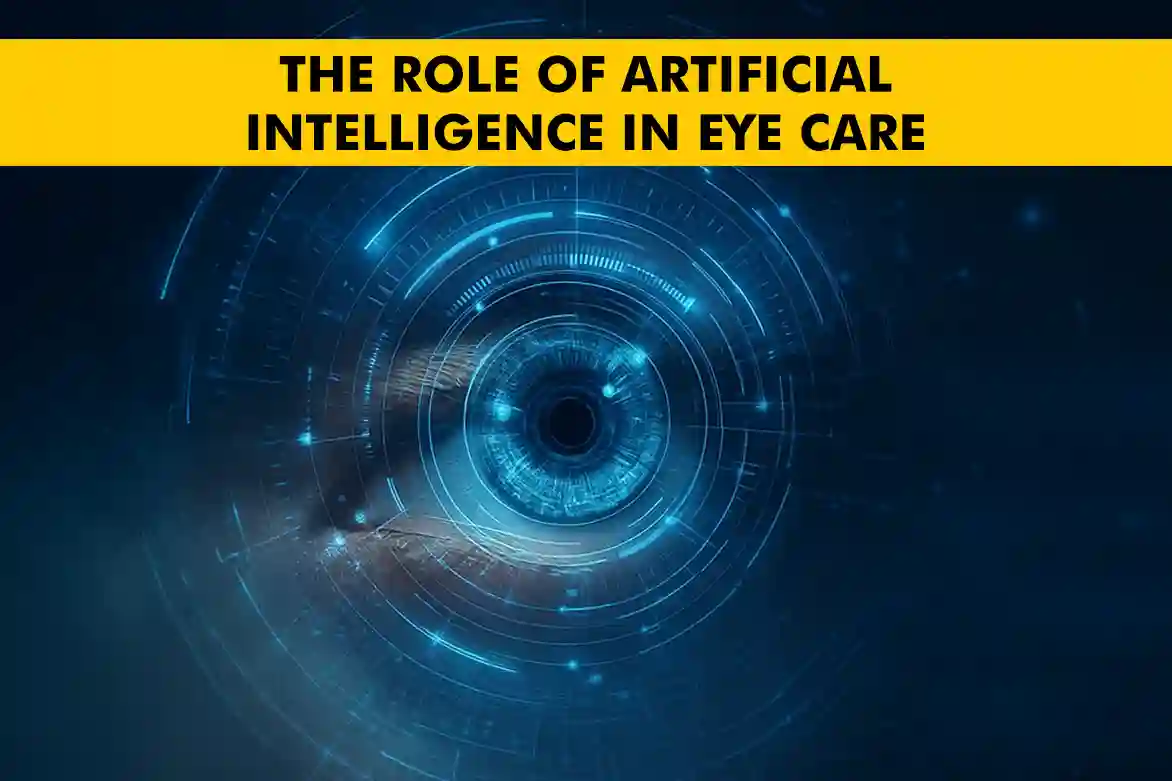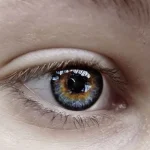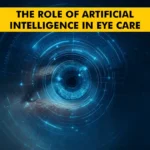Summary: Artificial Intelligence is transforming glaucoma diagnosis by making it faster, more accurate, and possible at much earlier stages. With the ability to analyze large sets of retinal images and detect subtle changes that often go unnoticed during routine exams, AI is helping doctors identify glaucoma before significant vision loss occurs. This blog highlights why early detection is essential, how AI-powered tools like OCT, fundus imaging, and visual field analysis improve accuracy, and what challenges still need to be addressed. It also looks at the future of AI in glaucoma care and its growing role in advancing the field of ophthalmology.
|
Key Takeaways:
|
Artificial Intelligence (AI) is making significant strides in healthcare, particularly in the diagnosis and treatment of eye diseases like glaucoma. Glaucoma is a group of eye conditions that can cause blindness by damaging the optic nerve, often linked to high intraocular pressure. AI’s ability to analyze complex data quickly and accurately is proving to be a game-changer in glaucoma diagnosis, offering new hope for early detection and improved patient outcomes. In this blog, we will explore how AI is transforming glaucoma diagnosis, the benefits of early detection, and the challenges that still need to be addressed to fully integrate AI into clinical practice.
The Growing Need for Advanced Glaucoma Diagnosis
Glaucoma is often referred to as the ‘silent thief of sight’ because it progresses gradually without noticeable symptoms in its early stages. By the time vision loss becomes apparent, significant and irreversible damage may have already occurred, making early detection crucial. This condition is particularly concerning as it can lead to complete blindness if not managed properly. Given the aging global population and the increasing prevalence of glaucoma, there is a critical need for advanced diagnostic tools that can identify the disease earlier and more accurately. These tools not only help in preserving vision but also reduce the long-term healthcare costs associated with managing advanced glaucoma. Additionally, early diagnosis can lead to more effective treatment plans, potentially slowing the progression of the disease and improving the quality of life for patients.
How AI Technology Enhances Diagnostic Accuracy
AI technology significantly enhances diagnostic accuracy by utilizing advanced machine learning algorithms capable of analyzing extensive datasets of retinal images. These algorithms are designed to identify intricate patterns and specific markers that are indicative of glaucoma, which might be overlooked by the human eye. By being trained on a vast and diverse array of data, these algorithms can detect subtle changes in the retina and optic nerve that occur before the onset of glaucoma. This capability allows for a more precise and earlier diagnosis, potentially improving patient outcomes by facilitating timely intervention and treatment.
AI-Powered Tools and Techniques in Glaucoma Detection
Numerous AI-powered tools and techniques are being developed and utilized for glaucoma detection. One prominent tool is Optical Coherence Tomography (OCT), which employs AI to generate detailed cross-sectional images of the retina. This allows for the early identification of changes associated with glaucoma. Additionally, AI-enhanced visual field tests are used to assess the functional impact of glaucoma on a patient’s vision by detecting subtle changes in the visual field. Fundus photography, another technique, captures images of the interior surface of the eye, and when combined with machine learning, it enhances the accuracy and reliability of glaucoma screening by identifying specific patterns and markers indicative of the disease. These advanced methods collectively improve the sensitivity and specificity of glaucoma detection, facilitating earlier and more precise diagnosis.
Benefits of Early Detection Through AI
- Halting or Slowing Disease Progression: AI enables early detection of glaucoma, which can significantly halt or slow the progression of the disease. This early intervention is crucial in preserving the patient’s vision and preventing further deterioration.
- Preservation of Vision: By identifying glaucoma at an early stage, AI helps in maintaining the patient’s vision, reducing the risk of severe vision loss that can occur if the disease progresses unchecked.
- Improved Quality of Life: Early intervention facilitated by AI can greatly enhance the quality of life for patients. By reducing the likelihood of severe vision impairment, patients can continue to engage in daily activities with minimal disruption.
- Streamlined Diagnostic Process: AI technology streamlines the diagnostic process, making it more efficient and less time-consuming. This efficiency benefits both physicians, who can diagnose more patients accurately, and patients, who receive quicker and more reliable diagnoses.
- Increased Accessibility: The use of AI in glaucoma diagnosis makes the process more accessible, allowing for broader reach and availability of diagnostic services, especially in areas where specialized ophthalmological care may be limited.
Challenges and Limitations of AI in Glaucoma Diagnosis
- Data Quality and Diversity: The effectiveness of AI in diagnosing glaucoma heavily relies on the quality and diversity of the datasets used for training algorithms. If the data is inadequate or biased, it can result in inaccurate diagnoses, potentially leading to mismanagement of the condition.
- Ethical and Regulatory Concerns: There are significant ethical and regulatory issues to consider, particularly regarding patient data privacy. The use of AI tools must comply with stringent data protection laws to ensure patient confidentiality is maintained.
- Clinical Validation: AI tools require thorough clinical validation to ensure their reliability and accuracy in real-world settings. Without proper validation, there is a risk of deploying tools that may not perform as expected in diverse clinical environments.
- Human Expertise Integration: It is essential to ensure that AI complements rather than replaces human expertise. Ophthalmologists’ experience and judgment are crucial in interpreting AI-generated data and making informed clinical decisions.
- Bias and Fairness: AI systems can inadvertently perpetuate or exacerbate existing biases if not carefully designed and monitored. Ensuring fairness and equity in AI-driven diagnoses is a critical challenge that needs ongoing attention.
The Future of AI in Glaucoma Diagnosis and Treatment
The future of AI in glaucoma diagnosis and treatment appears highly promising due to the continuous advancements in AI algorithms and imaging technologies. These developments are enhancing the precision and efficiency of AI systems, making them increasingly capable of handling complex diagnostic tasks. AI has the potential to become a fundamental component of routine glaucoma screening and monitoring processes by offering continuous and real-time analysis of patient data. This means that AI systems can constantly evaluate changes in a patient’s eye health, providing timely alerts to healthcare providers about any significant developments that may require attention. Moreover, AI could significantly contribute to the creation of personalized treatment plans by accurately predicting how a patient’s glaucoma might progress and how they might respond to various treatments. This capability would allow for more customized and effective patient care, as treatments could be tailored to the specific needs and conditions of each individual, potentially improving outcomes and quality of life for those affected by glaucoma.
The Future of AI in Ophthalmology
Beyond glaucoma, AI is poised to revolutionize the entire field of ophthalmology. From diabetic retinopathy and age-related macular degeneration to cataracts, AI-driven diagnostic tools are being developed for a range of eye conditions. These advancements promise not only to enhance the accuracy of diagnoses but also to facilitate earlier interventions, potentially preventing severe vision loss. The integration of AI in ophthalmology can lead to more precise diagnostics, better patient outcomes, and more efficient use of healthcare resources, ultimately transforming the way eye care is delivered globally.
Conclusion
In conclusion, AI is transforming glaucoma diagnosis by enhancing accuracy, enabling early detection, and improving patient outcomes. While there are challenges to overcome, the potential benefits of AI in this field are immense.
As technology continues to evolve, AI will likely become an indispensable tool in the fight against glaucoma and other eye diseases, heralding a new era of precision medicine in ophthalmology.
FAQs
How accurate is AI in diagnosing glaucoma?
AI has shown high accuracy in diagnosing glaucoma, often matching or exceeding the diagnostic capabilities of human experts.
Is AI replacing ophthalmologists in glaucoma diagnosis?
It is important to note that AI is not replacing ophthalmologists but rather augmenting their diagnostic capabilities.
Can AI detect glaucoma at an earlier stage than traditional methods?
AI can detect glaucoma at an earlier stage than traditional methods by identifying subtle biomarkers and changes in the retina and optic nerve.
What is the role of AI in monitoring glaucoma progression?
AI plays a crucial role in monitoring glaucoma progression, providing continuous analysis and alerts for any significant changes.
Are AI tools available in every ophthalmology clinic?
While AI tools are becoming more prevalent, they are not yet available in every ophthalmology clinic. Wider adoption will depend on further validation, regulatory approvals, and integration into existing healthcare systems.





